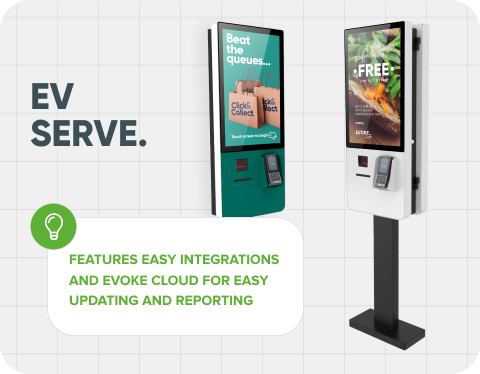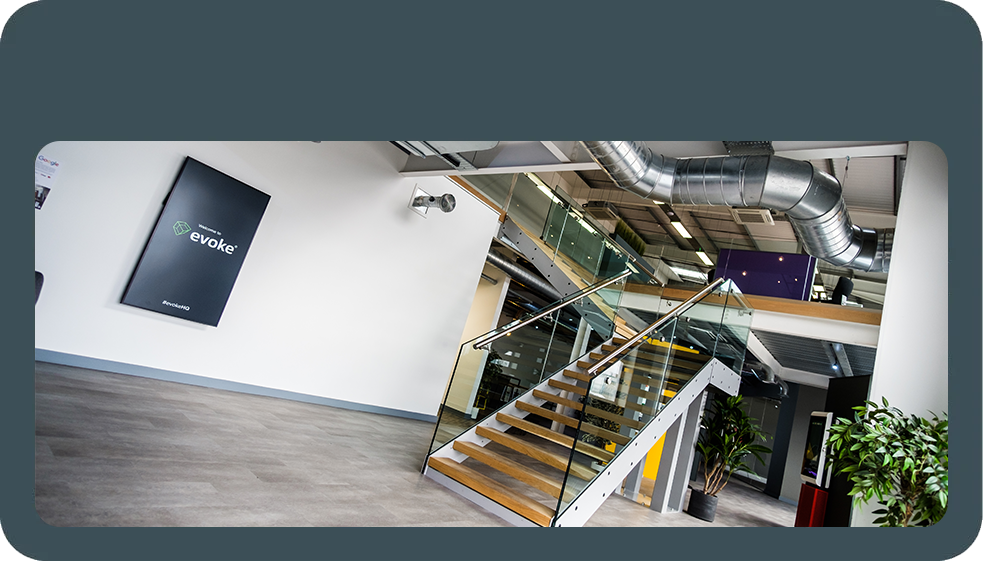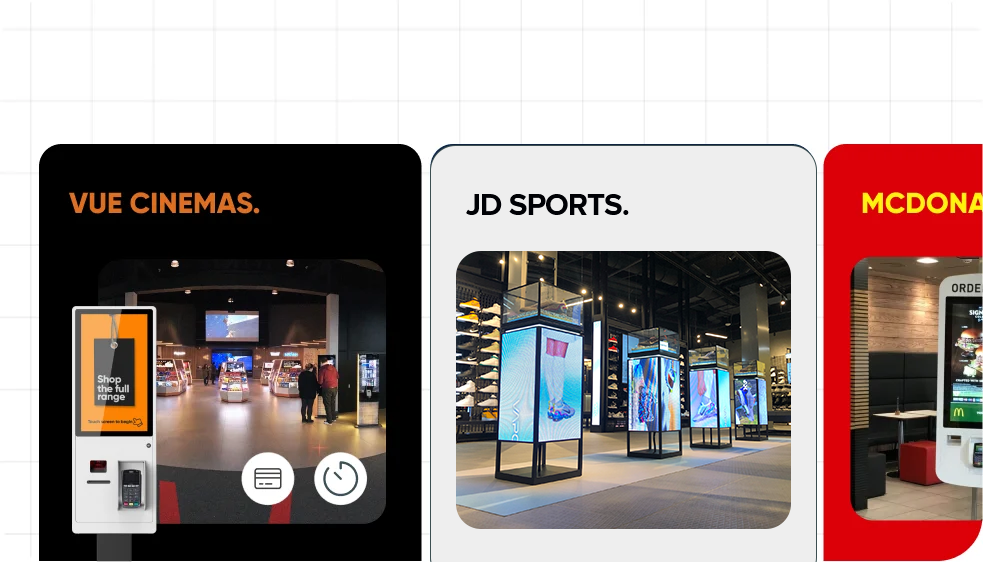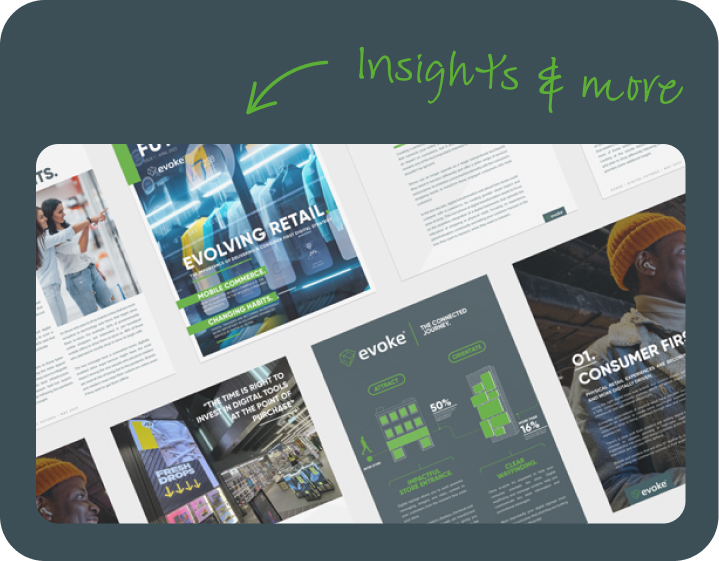Wondering How to Improve the Customer Experience in Restaurants? Here’s 9 Ways
Restaurants are where people go to forget their troubles and be taken care of, and today the food served is just one part of the overall experience.
Dining out has become more infrequent due to rising costs, which means expectations are higher than ever. So when guests are ready to part with their money, they expect the entire experience to be consistent and memorable.
Unhappy customers have more ways to show their displeasure, be it on review platforms or social media. So, given how easy it is to complain, improving customer experience in restaurants is now even more critical for customer satisfaction.
If communication or service levels drop, it can cost a business money and see loyalty vanish. Thankfully, tech is transforming the way restaurants serve and engage their customers. Self-service kiosks help QSRs reduce the length of the line in high-density areas, and loyalty platforms help to incentivize customers to return by offering custom rewards.
We’ll explore nine ways to improve customer experience in restaurants by focusing on the factors that matter most. By combining and integrating these nine elements, you can delight customers and grow your average order value.
Table of contents:
- Nail the first impression
- Create a frictionless ordering process
- Speed and accuracy every time
- Train your team to be brand ambassadors
- Personalize every interaction
- Make feedback frictionless and act on it
- Design for atmosphere and emotion
- Use tech to connect the dots
- Keep evolving based on insights
1. Nail the first impression
The first impression is about giving them a taste of what is to come once they sit at their table.
From the moment a guest enters the building, their senses are going to be hit by the atmosphere of the restaurant, the music, the lighting, the attitude of the staff, and everything in between.
Your lobby sets the tone. The entrance should be clean, well lit, and offer a welcome that reflects your restaurant. Harsh lighting or off-putting smells instantly deters diners and moves their focus from the meal ahead to something that could have been avoided.
Digital menus can start guests thinking about what to order, and directional signage can make navigating easier. Catering for every diner is important as well.
Accessibility through clear signage, wheelchair access, and digital ordering tools with screen-reading options demonstrates that every guest is welcome. Chili’s, for example, has been utilising table-side tablets to allow guests to pay when they like. And for their kitchen staff, new display systems allow them to instantly pull up recipes without having to flick through a large folder, reducing the time from order placed to order served.
While a charming lobby is a good start, it’s meaningless unless a guest is greeted by a team member within 30 seconds. This opportunity allows staff to recognize their arrival and, if using a kiosk or EPOS system, notify front and back-of-house staff that this table has now arrived.
Showing guests you’re managing their arrival matters.
 2. Create a frictionless ordering process
2. Create a frictionless ordering process
Ordering should be an enjoyable experience that’s about getting guests excited for what’s to come.
Self-ordering kiosks and mobile apps automate ordering which helps to move customers through the purchase journey in QSR settings more quickly. Starbucks allows customers to order their favourite coffee while on the way to their local store and have it ready for collection by the time they walk through the door.
In more traditional restaurant settings, digital ordering systems reduce errors and ensure that allergies and dietary requirements are communicated clearly to the kitchen.
Both technologies have the bonus of speeding up the process of getting food from kitchen to table, priceless during peak periods when queues can gather and diners can get impatient.
Technology can go further, with mobile app ordering complementing kiosks and server-assisted tables, helping to cater for accessibility and dietary needs as well as guest preferences.
Giving customers total control of the food they’re about to eat, such as swapping sides or flagging allergens, is another way of putting them front and center of their restaurant experience.
An effective digital solution will have a UX that supports modifications - whether it's the customer making them or a member of the front-of-house team - clearly and quickly, without having to go through several submenus.
Offers and upgrades can be smartly highlighted during the order journey, with customers more likely to “make it a combo” or add a dessert when not feeling pressured to.
Payment is the last step of the ordering process and should be quick, easy, and cater to people’s preferences using:
- Contactless payments
- Digital wallets
- Split payment options
3. Speed and accuracy every time
Once the ordering process is complete, the priorities now become about speed and accuracy, making sure the food that arrives at the right time and is accurate to what was ordered.
Kitchen Display Systems (KDS) give kitchen staff a single source of truth around orders.
Whether it's a dine-in, a take-out, or a delivery, a sufficient KDS will help prioritize what should be made next and help to reduce ticket time and increase food accuracy.
In restaurants, communication is everything, so making sure that the front and back of the house are in sync is essential. An integrated system takes care of orders from different points in a restaurant - be it a kiosk or from a wait staff’s tablet - and prioritizes accordingly. Human miscommunication can result in food being sent out incorrectly or at the wrong time, but digital interfaces keep everyone on the same page.
Remove uncertainty by including visible timers, showing how long someone has to wait before their meal is ready. Customers are far more forgiving if they can see that their meal is 7 minutes away, for example, than if they are just left waiting.
Being able to rely on tech in restaurant settings is great. However, staff should still be able to use their instincts and be trained to solve issues around speed of table turnover or redeploy staff in other areas if needed.
4. Train your team to be brand ambassadors
Employees are the face of any restaurant business and are the people who deliver experiences, as well as meals. Those who understand the restaurant’s brand and feel valued will instinctively go above and beyond during service.
Upselling, while effective, works only when it is done in a way that feels helpful, not forced. Training your team to frame upselling as a low-stakes question rather than a sales pitch, e.g., “Would you like to add fries for just $3?”, gives the customer the power to decide, empowering them and improving their perception of the restaurant.
Staff who possess high levels of emotional intelligence are real assets for a restaurant. Product knowledge only goes so far; being able to read a room and deal with guests who may be frustrated helps to ensure a smooth service that’s complemented by digital solutions.
Reward those who improve the customer experience in restaurants. Move the incentive away from just sales and motivate the right behaviors with rewards. Providing a memorable customer experience should be treated as a value, not a KPI, that all staff hold.
Said values can be taught and ingrained through ongoing staff training. Refreshers on new tech, changes to menus, and service principles keep all staff members working to achieve the same high standards, no matter how busy a service might get.
5. Personalize every interaction
Personalizing moments during a diner’s visit helps to foster an experience that will be remembered far longer than your average meal out. Repeat diners will be there through good times and bad, making it vital for staff to hero them wherever possible. Training them to recognize repeat customers and ensuring they’re greeted by name makes them feel welcome every time.
Appropriate use of data can help staff do small, thoughtful things that will be remembered for years to come. For instance, if a guest enjoys a particular dish, staff can offer a personalized coupon for it on their next visit.
Digital solutions, such as apps or smart kiosks, use customer data and trends to provide upsell opportunities that are unique to them both at the point of purchase and through re-engagement campaigns. Listing their favorite items to order or offering personalized discounts based on a life event, such as a birthday, creates that customer-restaurant connection even when there is no face-to-face ordering.
Personalization is a fine line, though. It’s important not to overstep. Diners like feeling seen but equally want to retain their privacy; it should feel helpful. You should always allow guests to decide how data is used so that they always feel in control and to remain compliant with GDPR and ADA practices.
Want to see how these features come to life? Explore our recent work with leading brands.
6. Make feedback frictionless and act on it
Once a guest has paid, make subsequent feedback easy and quick to submit. QR codes on tables or checks give customers the ability to provide feedback while the experience is still fresh in their minds.
Where appropriate, highlight feedback channels so that guests are aware of all the places they can give their opinion during their time there.
Reviews on platforms such as Yelp and Google demand a quick, professional response, whether they’re positive or negative. Unanswered negative reviews have a far greater impact than those that have a response underneath them, no matter how big or small the issue was.
During a busy service, train staff to resolve problems immediately without having to obtain approval from superiors. Whether it's money off a check or a complimentary drink, quick solutions followed by a sincere gesture of goodwill can turn a negative into a positive.
Any sort of feedback should be logged, and an action should come as a result of it. If customers repeatedly complain about cold take-out food arriving, for instance, invest in better insulated packaging and tell customers that you’ve made this change.
By informing diners you have listened, you turn a problem into a growth opportunity.
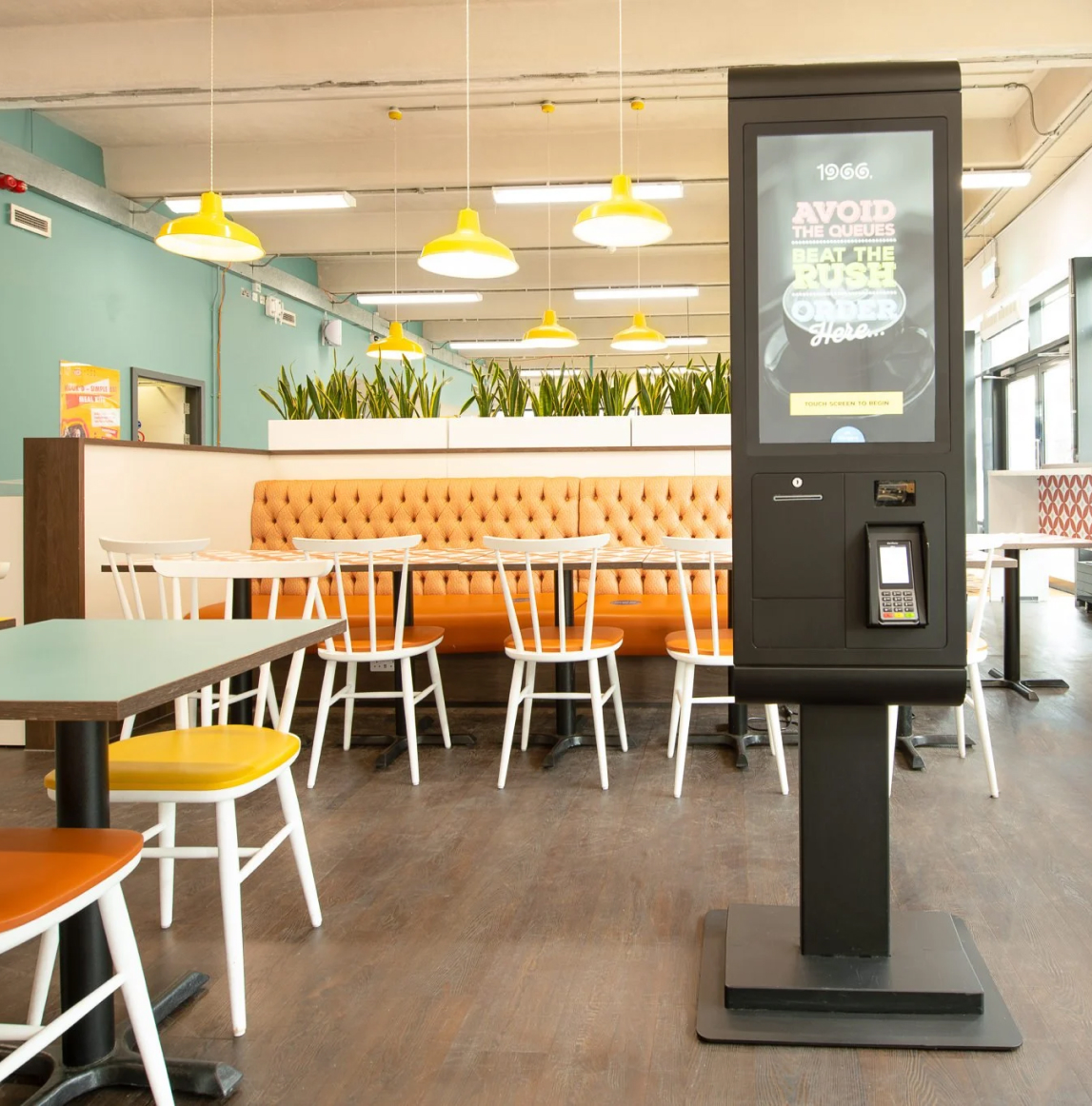
Want to manage your restaurant experience remotely?
7. Design for atmosphere and emotion
The design and layout of your restaurant help create the right atmosphere and evoke the right emotions from diners.
Lighting sets the tone, pace, and perception of a restaurant, and should be adjusted depending on the time of day. During the day, lighting should be bright, whereas warmer lighting tones should be introduced for dinner service.
What people hear, and how loudly they hear it, matters, too. A curated playlist that reflects your restaurant is an easy way to reinforce the atmosphere that your lighting has already given the space.
Designing areas of your restaurant to suit the different types of guests will improve operational efficiency and flow. For solo or two-person covers, have their tables at the front for easy exit and faster turnover times. For larger families and couples, incorporate booth seating, private dining, or outdoor space to ensure everyone can truly relax.
Use decor to reflect your restaurant’s location. Highlight local art, gently incorporate your brand throughout the restaurant, right down to the napkins. Digital signage can be subtly incorporated and blend seamlessly into the wider decor. Promotional offers, wait times, and loyalty offers can all be included, providing guests with this information, albeit subconsciously.
8. Use tech to connect the dots
 Integrating tech wisely and choosing a consultative partner who can offer more than just installation will maximize the impact hardware and software will have on your restaurant.
Integrating tech wisely and choosing a consultative partner who can offer more than just installation will maximize the impact hardware and software will have on your restaurant.
Kiosks, for instance, offer customers a chance to order at their own pace, allowing them to browse and customize their order. For Gen Z and younger millennials who are used to such high levels of customization, self-service kiosks offer a familiar customer experience.
Digital signage offers a dynamic way to update diners with offers and promotions in a way that is totally unique to your branding. Content can be altered in minutes without needing to reprint menus or physical signs.
Improving customer experiences in restaurants can extend to people’s personal devices, too. Mobile ordering, loyalty schemes, and personalized notifications about table readiness or offers can be accessed from one device.
Tech should be accessible to all customers in line with ADA guidelines. Everything, from touch screens to apps, must include options to change languages and have screen reader functionality.
While front-end tech can impress customers, it is only impactful if backend integrations are optimized. Electronic Points of Sale (EPOS), your Customer Relationship Management (CRM), and the kitchen’s display system (KDS) all need to be integrated to ensure a smooth order process from kitchen to table. Any sort of friction between these backend systems will quickly appear in the front end.
9. Keep evolving based on insights
Improving the customer experience in a restaurant is never ‘done’. With changing customer expectations and advancing restaurant tech, CX in 2025 might be outdated by 2026. To combat this, set up regular benchmark meetings and adapt your approach to meet new preferences.
Within these meetings, invite internal feedback from frontline staff. They see firsthand what guests enjoy about their experience and what they find frustrating; these valuable insights can be used to make improvements.
Continuously test, too. Running small pilots for kiosk-only zones, for example, is a low-stakes way to trial new tech without sacrificing the wider customer experience in restaurants. Knowing what new formats work and what don’t is key to future developments that are in line with your existing model.
Within these pilots, encourage creative risk, empower teams to trial new ideas and measures based on what they’ve seen and experienced with customers.
Finally, work with strategic partners that offer more than just tech. Evoke pulls experience from several different industries, such as retail and hotels, to provide transformative digital experiences for restaurants in the US.
Use Tech and People to Deliver Standout CX
Delivering a truly memorable experience at a restaurant is about bringing together the thoughtfulness and sincerity of human interaction with the efficiency of tech. The latter can help to create personalized experiences while the former turns diners into loyal customers.
A frictionless experience is profitable, and as restaurants and dining continue to evolve, those in the industry must always look for ways to create memories that last.
